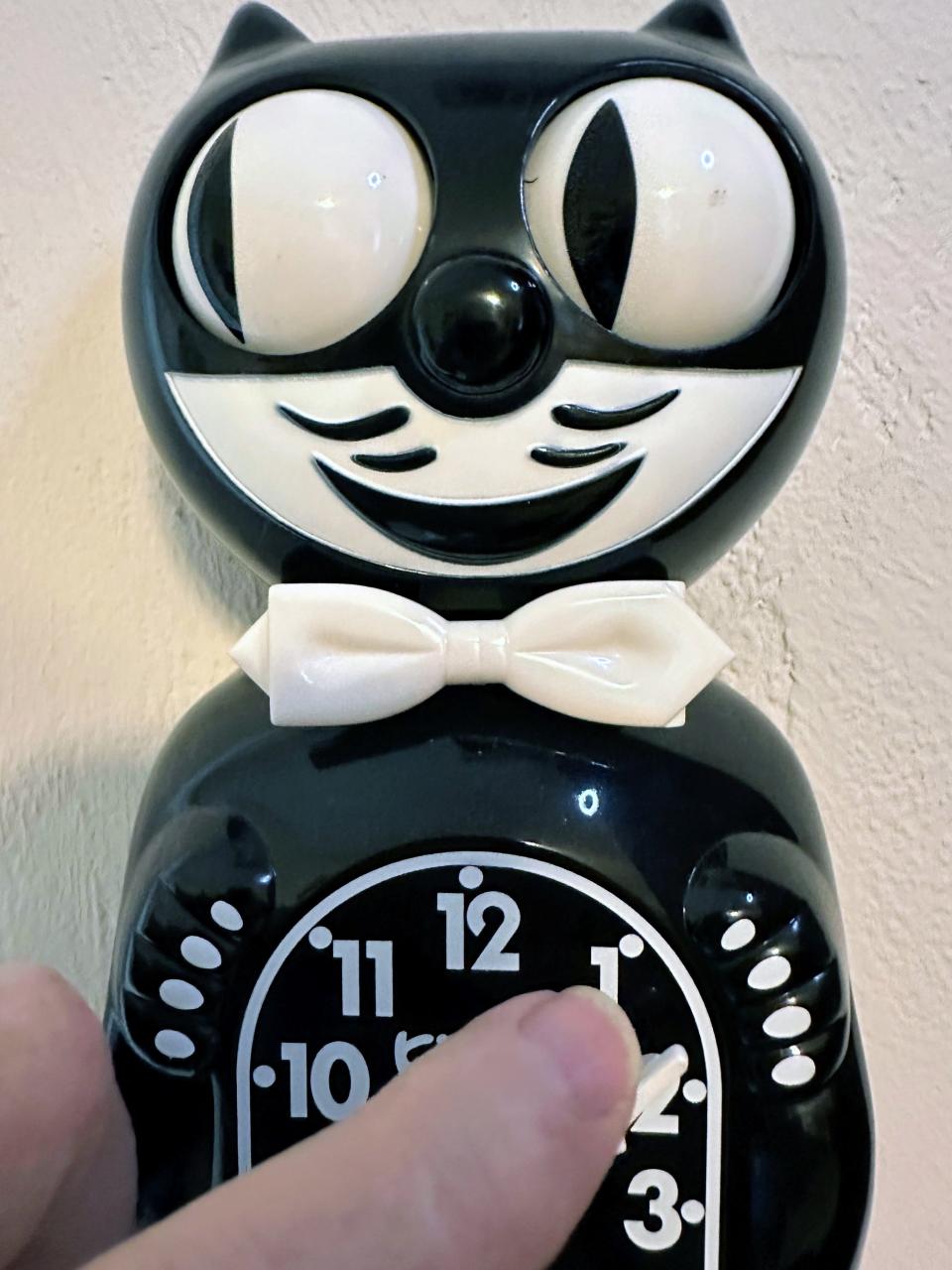Daylight saving time ends – for now. Why I'm not complaining.
The twice-a-year clock resetting always finds me digging through my car's glove compartment. Past fast-food napkins, below expired registration slips, and under some state park brochures in search of the instruction manual. I change my car's clock only twice a year, sometimes not even then, so I never remember how to do this and seek help.
As more of my devices connect to the internet, I've discovered I have fewer time-change chores each year. My laptop, watch and phone obligingly adjust at the stroke of 2 a.m. without my intervention. Even the hallway thermostat's clock knows what to do. But the car? That's always the last thing to sync with the rest of the time zone. It even goes after the microwave oven.
The post-Halloween time change – this year it's Nov. 5 – is the easiest of the two because I gain a precious hour of sleep time, something I appreciate. Conversely, I approach every "spring forward" with a late riser’s dread.

Why isn't daylight saving time year-round?
Biannual clock adjustment is a minor irritation, but not one that has gone unnoticed legislatively. Here in Florida, which advertises itself as the Sunshine State, we pay close attention to the daily allotment of sunshine. It is our principal product. Which is why the Florida Legislature passed the Sunshine Protection Act of 2021 to put us on permanent daylight saving time.
This is the kind of legislation everyone could feel good about: It addresses a widely felt annoyance, costs no money and doesn’t have any effect, so it won’t bother anyone. That last feature is because changing state timekeeping requires congressional approval, something that has not been forthcoming.
This is despite the efforts of Florida Sen. Marco Rubio, who last year saw his own Sunshine Protection Act breeze through the U.S. Senate on a unanimous vote. That legislation, however, went nowhere in the House of Representatives. Which is why I am rooting through my car's glove compartment again and wondering anew why it's called that because nobody I know ever put a glove there.
Sen. Rubio: When does the time change? My bill would make it 'never.'
But this is a case where House inaction might have been a good thing. We have tried yearlong daylight saving time before. It's popular in spring then inevitably runs into a winter of discontent. The mornings could get pretty dark come the holidays without clock shifting.
Don't make daylight saving time permanent. We tried it – and people died.
During World War II, yearlong daylight saving time was called "war time," as in 9 a.m. Eastern War Time. And it caused enough unhappiness that Georgia moved the entire state to Central War Time, and the Florida House voted to do the same in 1943, although the measure died in the Senate.

War time ended in 1945, and it was not until 1966 that the nation went to unified seasonal daylight time.
Until 1974, that is, when in response to the oil embargo, the nation went on year-round daylight time. "Daylight saving time all year would be intolerable," a Daytona Beach Evening News editorial’s headline warned that year. "One can make a reasonably good case for daylight saving on long days but a miserable case on short days," it unsuccessfully argued.
'Fall back' and thrive: How Finland taught me to embrace the end of daylight saving time
Parents of schoolchildren were particularly unhappy at getting the kids to school in the dark and were getting vocal about it. After eight Florida students died in predawn car crashes, Gov. Reubin Askew called a special session at the start of 1974 to take peninsular Florida off daylight saving time. Legislators took a quick vote, voted no and went home, only to hear more grumbling from PTA moms.
There was a lot of public blowback around the nation. Meanwhile, the supposed energy savings were slight. Year-round daylight time died unmourned in 1975.
Opinion alerts: Get columns from your favorite columnists + expert analysis on top issues, delivered straight to your device through the USA TODAY app. Don't have the app? Download it for free from your app store.
The new push for year-round daylight saving time seems a pretty good example of how those who cannot remember the past are condemned to repeat it. War time was tolerable only because there was a war on and was abandoned as soon as war ended. The energy-saving daylight time of the '70s caused enough wintertime consternation that it only lasted a season and saved hardly any oil. But now it's suddenly a popular idea again.
Granted, skipping the glove box search twice a year would be nice. (Oh, look! A homemade mask from early pandemic times, just under the flattened barbecued potato chip bag.)
But the price for that one-day convenience would be walking around and driving in the dark through successive winter mornings and hard predawn wake-ups.
I'm counting on continued congressional inaction to keep things as they are.
Mark Lane is a columnist for The Daytona Beach News-Journal, where this column first published. His email is mlanewrites@gmail.com
You can read diverse opinions from our Board of Contributors and other writers on the Opinion front page, on Twitter @usatodayopinion and in our daily Opinion newsletter. To respond to a column, submit a comment to letters@usatoday.com.
This article originally appeared on The Daytona Beach News-Journal: Daylight saving time 2023: We 'fall back,' but is time change ending?

